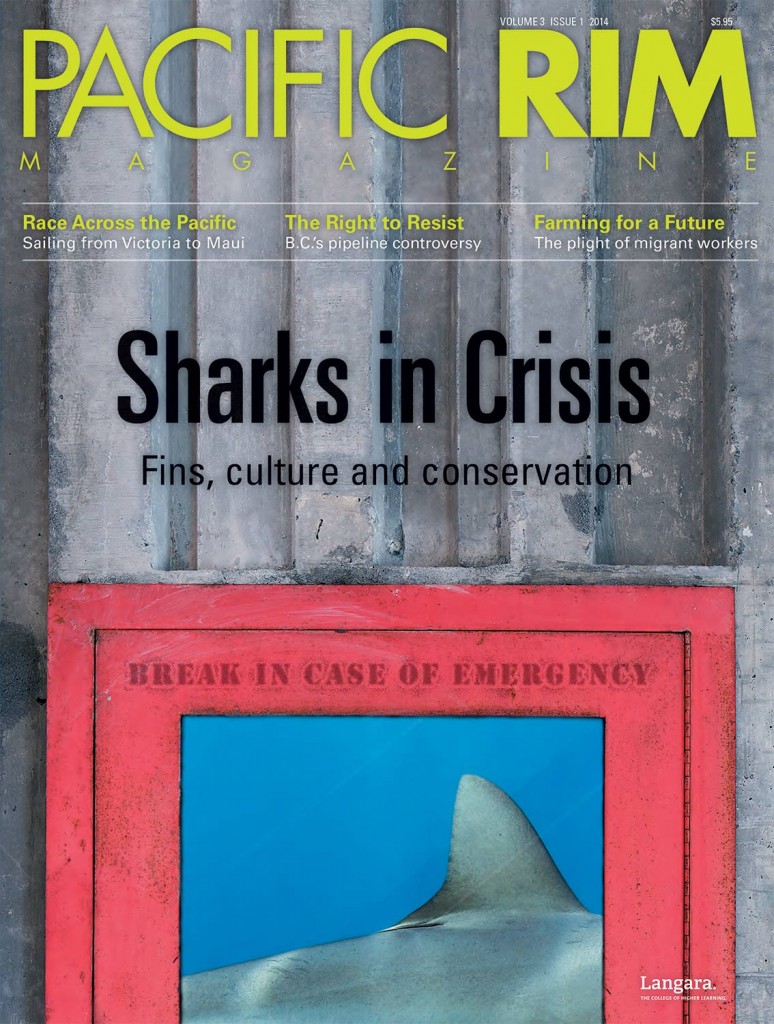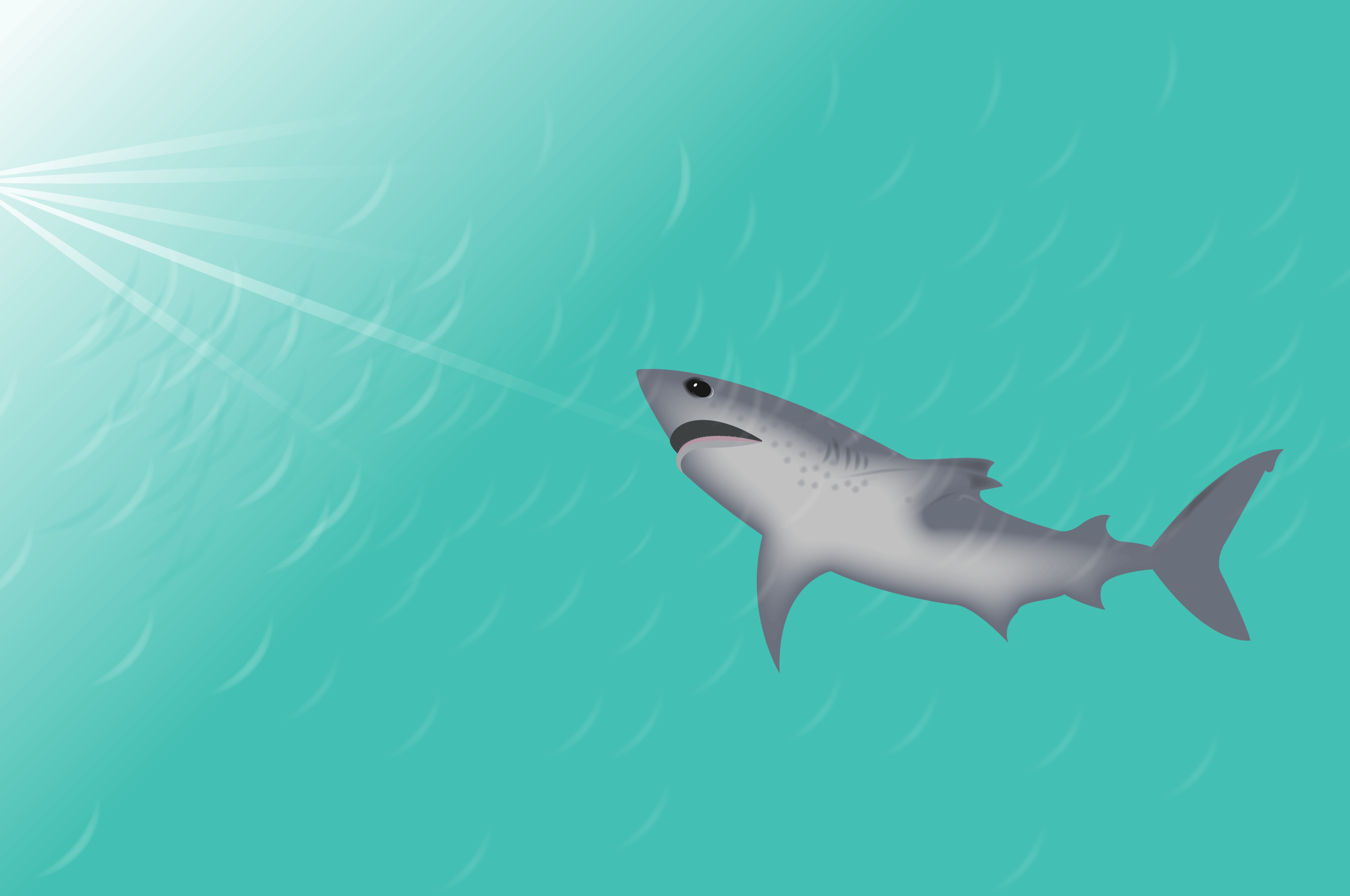
Sharks are often depicted as killers of the deep: creatures to be feared and avoided. However, it is the sharks that are being killed in large numbers, particularly for their fins. Observing sharks in the wild can transform fear into admiration, and University of British Columbia researchers suggest that a greater appreciation for sharks in the wild could eventually make sharks more valuable in the ocean than in a bowl of shark fin soup.
A 2013 study, led by PhD candidate Andrés Cisneros-Montemayor, projects that shark-related ecotourism may generate more revenue globally than shark fisheries within the next 20 years. The economic incentive for keeping sharks alive could prompt nations to adopt stronger conservation policies. However, the divided interests and incentives of those swimming with sharks versus those fishing for or consuming them poses a significant hurdle. Can ecotourism really make a difference?
Sharks at Risk
Shark fin soup first appeared about 600 years ago in the court of the Ming Dynasty. Once thought to increase sexual energy, shark fin consumption eventually became a display of affluence—the fins prized for their rarity and for the prowess of the animal they were removed from. Though the dish has long been popular among Hong Kong elites, mainland China’s burgeoning nouveau riche only began consuming shark fin en masse following the nation’s economic opening in the mid-1980s. As disposable incomes have risen in China, so too has demand for the delicacy. In 2010, Hong Kong, the main hub of the fin trade, imported more than 9,500 metric tonnes of fins from over 80 nations. While many sharks are caught as bycatch—particularly by commercial operations trawling for tuna and other popular groundfish such as cod, halibut, and sole—some are intentionally hunted for their fins alone.
“One big issue is that we don’t know a lot about poaching,” says Cisneros-Montemayor, whose study examined official shark landings, as reported to the Food and Agriculture Organization (FAO) of the United Nations, for comparison against global ecotourism revenues. “When you start comparing the amount of sharks being traded in the market with the landing numbers, they don’t match up,” he says. A lot of shark finning goes unreported or unregulated, particularly poaching activities that take place in national waters where shark fishing is illegal. There are no laws governing shark fishing in international waters, creating another blind spot in landing figures. Actual catches are thought to be three to four times higher than reported, suggesting that as many as 26 to 100 million sharks are killed every year.

The sharks, which reach sexual maturity slowly (15 to 35 years for some species) and birth small litters, have not been able to keep up with the demand. A study published in January 2014, led by Simon Fraser University Professor and Canada Research Chair in Marine Biodiversity and Conservation Nick Dulvy, analyzed the extinction risks for over 1,000 of the world’s shark and ray species. Based on criteria set by the International Union for the Conservation of Nature (IUCN), the study found that half of the 69 most sought after species in the fin trade comprising sharks and shark-like rays (the most valuable fins in the trade actually come from the latter) are now considered to be threatened.
Some Pacific Rim nations, notably the Federated States of Micronesia, the Marshall Islands, Palau, Tokelau, Guam, the Mariana Islands and the Cook Islands, have responded to the decline in shark populations by banning shark fishing of any kind within their national waters. In 2011, shark-related ecotourism expenditures in Palau alone totalled over USD 20 million. “The way I think of it, shark ecotourism has played a role in prompting nations to protect local shark populations,” explains Cisneros-Montemayor. “And when you start to have a whole bunch of countries that are aware of the public opinion within their borders and are taking on conservation at a higher level, then it becomes a global effort,” he adds.
A Balanced Dialogue

Conservation efforts in Canada have been less sweeping. Though Canada established a National Plan of Action for the Conservation and Management of Sharks (NPOA), based on international guidelines set by the FAO, the NPOA has been criticized for its lack of clear timelines, priorities and performance measurements. In addition, while shark finning (removing solely the fins of the shark) has been illegal in Canada since 1994, importing shark products is not. The demand for fins among the Chinese-Canadian community remains high. According to the Canadian Food Inspection Agency, Canada imports 77,000 kilograms of fins per year. Thus far, federal and municipal attempts to ban shark products in Canada have been met with staunch opposition by those who see an all-out ban as a cultural bias. Government officials are wary to come down on either side of the debate. This leaves activists and consumers on opposite sides of the fence. On one side is conservation and on the other is culture.
“There’s a saying,” says shark fin activist Claudia Li. “If you’re marrying into a family without shark fin, then you’re marrying into a poor family.” At 27, Li is the co-founder of Hua Foundation, a Vancouver-based organization dedicated to promoting and raising awareness of shark conservation within the Chinese-Canadian community. Due to the cultural nature of the practice, “a lot of the attention surrounding the issue tends to be xenophobic,” she says. “The conversation is always cast as the misunderstood shark versus the evil shark fin consumer. People just feel attacked and get defensive.”

Despite her heritage, Li also met with opposition from shark fin consumers due to her being born and raised in Vancouver. Her way around this was to find and communicate values that resonated with the Chinese-Canadian community, rather than values that resonated with activists. “We started to look at it from the perspective of positive choices,” she explains. “Our parents always say they came here to give their kids a better standard of living, so we explained that we’re just trying to do the same thing—trying to ensure that our kids have a better quality of life [by protecting the environment for future generations].”
With that framework in mind, Li and her colleagues began to target the most conspicuous shark fin consumption arena: weddings. Hua Foundation’s annual “Happy Hearts Love Sharks” contest, launched in 2010, challenges couples to forego serving shark fin soup at their wedding banquet. “Shark fin is a luxury product; you purchase it to show off,” explains Li. “If you’re not serving it at your wedding, you have to explain why, and your family and friends have to listen.” Afterward, couples submit their wedding story and a photo to the contest website. The couple whose story attracts the most votes wins a free vacation diving with sharks in destinations like Mexico, Hawaii and the Galápagos Islands.
Last year, Hua Foundation partnered with the Hong Kong Shark Foundation to run the contest in Hong Kong, and in 2014 Hua plans to open source the contest so that it can be run by additional organizations as well. Offered as a reward, ecotourism becomes a tangible experience that helps people connect an action to its consequence.
West Coast Ecotourism
Unfortunately, opportunities to promote shark-related ecotourism in Canadian waters are limited. Such activities consist mainly of scuba diving, snorkelling, cage diving, sport fishing, and observation and feeding (to lure sharks to the surface) from boats. To mitigate the impact of ecotourist activities on the sharks, responsible dive operators limit the number of people in the water and their proximity to the sharks. There is some concern that baiting sharks could make them associate people with food, but this remains unproven. In terms of diving, the cold waters of the West Coast present a barrier for some, as does diving in a dry suit, which requires specialized training. Though 14 species of shark are known to regularly travel along the West Coast, sightings are rare and unpredictable. This makes observation-based activities unreliable and operators wary to promote them.
Hornby Island Diving comes up in any online search related to shark diving in B.C., but it is not something they actively promote. “We used to,” says owner Amanda Zielinski, “but our reputation is based on the time before the sightings started to drop off. We don’t want to give people unrealistic expectations.” Measuring over four metres long at full size, sixgill sharks were once quite common in the shallow waters around Hornby Island during the summer months, but in the last decade their numbers have dwindled. “We used to work with a scientist who [determined that many of the sixgills we observed were in fact coming back year after year],” Zielinksi explains,“but over time they showed clear signs of interaction with fishing: hooks in their mouths and cuts and so forth.”
Both the targeted and the incidental capture of sharks in commercial and sport fishing activities are primary threats to sharks in Canadian waters. In other nations where shark-related ecotourism is much more of a draw, tour operators have taken a market-based approach to protecting local shark species by paying fishermen to not fish in particular areas and giving them a cut of the profits in exchange. In Canada, the approach is still very much a dialogue. Kathy Johnson, owner of Rendezvous Dive Adventures in Barkley Sound, maintains a relationship with salmon fishers, talking with them about catch and release and how they might reduce bycatch. Her husband, Peter, founded Rendezvous’ Shark Week, an annual event during which guest scientists and volunteer divers conduct a survey of sixgill sharks. They work to determine why the sharks come to the West Coast and what factors, fishing or otherwise, are driving them away.
But fishing itself is not necessarily problematic. Recreational sport fishing or angling is, in fact, one of the largest ecotourism industries in B.C., contributing CAD 325 million to the provincial GDP in 2011. According to Statistics Canada, this figure is nearly on par with commercial fishing. The sport carries a fair bit of controversy where opinions on animal welfare are concerned, but the Department of Fisheries and Oceans Canada (DFO) upholds a catch-and-release policy for all shark species (except salmon sharks and spiny dogfish). “If you’re concerned about injuries caused to the shark by angling,” says Dulvy, “you have to ask yourself whether you value animal welfare more than the viability and sustainability of a species.” Angling can give fishers an appreciation for the strength and beauty of the animal, and can be combined with research initiatives to tag, track and research sharks as well.
Broadening the Discussion
For both Cisneros-Montemayor and Dulvy, the primary concern is always sustainability. “You have to be careful not to impose your values on other nations. I’m not in the business of getting Chinese people to stop eating shark fin soup,” says Dulvy, who points out that not all shark fishing is wasteful, particularly in developing countries where often the whole animal is used. “I’m in the business of seeing how we can do this sustainably without causing irreparable damage to the world’s biodiversity.”
While Li agrees that increased government regulation is needed, she worries that building the systems required to properly manage shark fishing will take too long. “Rarity is part of the appeal,” she reminds, “so the species that can be managed sustainably may not be the ones most desired. Our approach right now is to make it a taboo product.” In order to do this, consumer and non-consumer engagement is critical. “There’s no issue that doesn’t cross multiple communities and cultures,” says Li, and aptly so, given that many communities contribute to the demand that drives the commercial fishing practices that result in so much incidental shark bycatch. “If I’m going to criticize someone else, I have to hold the mirror up to myself.”
Regardless of the approach, Cisneros-Montemayor, Dulvy, Li, Zielinski and the Johnsons all agree that the conservation of shark populations relies on a variety of factors. Shark ecotourism ultimately hinges on a handful of charismatic and accessible species, making it nearly impossible for ecotourism alone to combat the revenues generated by the fishing and food industries. Improved government regulation and increased social awareness are vital, and the latter is where ecotourism can potentially play the greatest role. After all, being in the water with a shark leaves a strong impression.
Cisneros-Montemayor still recalls the first time he saw a large grey shark looming towards him in the open ocean, while spearfishing in Mexico. “I just freaked,” he says, and mimes swimming his way up to the surface, laughing at the memory. “I was terrified! I cocked my spear gun (I don’t know why, it wouldn’t have done anything) and put my head back in the water.” But the shark, merely curious, moved on into the blue. “I’d never felt so small before,” he pauses. “Small and vulnerable. It really gave me an appreciation for the living ocean. Everything we do has an impact.”


















